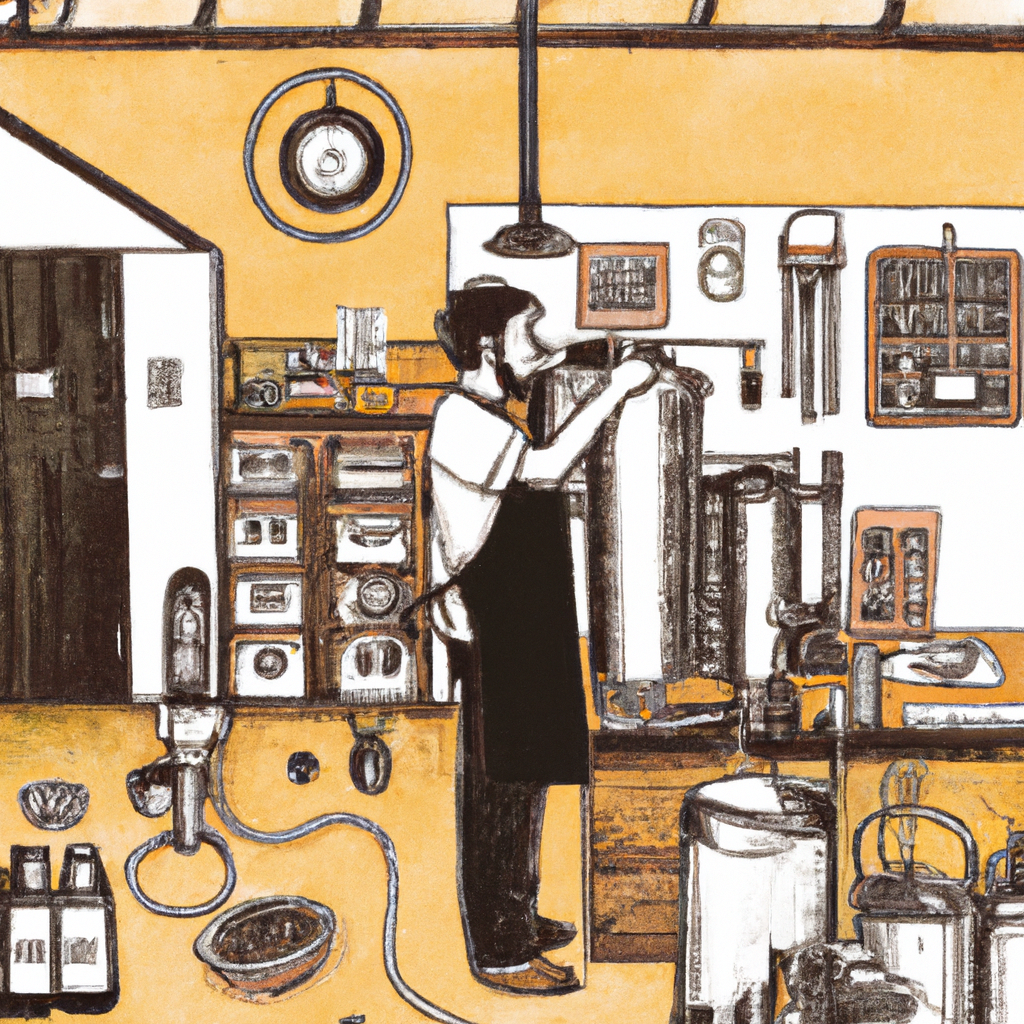Brewing Brilliance: The Essential DIY Homebrewing Equipment Guide

February 18, 2024
For the aspiring homebrewer, assembling DIY brewing equipment is an exciting rite of passage that sets the stage for the craft beer-making journey. The cornerstone of any homebrew setup is the brew kettle, where the magic of brewing unfolds. A stainless steel or aluminum pot with a capacity of at least 5 gallons is fundamental, allowing ample space for the boiling process and minimizing the risk of boil-overs. Essential additions include a reliable thermometer for precise temperature monitoring and a sturdy stirring spoon for efficient wort mixing. The fermentation vessel, a primary player in the beer creation process, can be a food-grade plastic bucket or a glass carboy, both capable of accommodating the bubbling fermentation action. To oxygenate the wort and set the stage for a robust fermentation, a trusty siphon comes in handy. When it comes to bottling the finished brew, a bottling bucket with a spigot simplifies the process, ensuring seamless transfer to individual bottles. To cap off the masterpiece, a capper and sanitized bottles wrap up the equipment ensemble, ready to house the liquid gold. While dedicated brewing equipment suppliers offer a range of specialized gear, savvy homebrewers can repurpose and adapt everyday kitchen tools to fulfill brewing needs. From repurposed large stockpots to repurposed glass carboys, the DIY spirit thrives as brewers get inventive with their setups, proving that a passion for brewing transcends the need for fancy equipment. Armed with resourcefulness and a bit of ingenuity, the journey into the realm of homebrewing becomes a vibrant, hands-on pursuit that celebrates the art of craft beer creation.
Q. How can I repurpose everyday household items for homebrewing equipment, and what are the benefits of doing so?
A. Repurposing everyday household items for homebrewing equipment allows you to embrace a resourceful, budget-friendly approach while adding a personal touch to your brewing setup. For example, a kitchen strainer can transform into a hop spider, containing hop pellets during the boiling process, and a simple laundry bag can serve as a brew bag for containing grains during mashing. Additionally, utilizing a cooler as a mash tun presents a cost-effective alternative to specialized brewing vessels, maintaining a steady mash temperature for optimal starch conversion. The benefits of repurposing household items for brewing lie in fostering a deeper connection with the brewing process, a sense of pride in crafting beer with self-fashioned equipment, and the opportunity to showcase creativity and individuality in your brewing setup.
In the DIY homebrewing community, resourcefulness reigns supreme, and repurposing common household items into brewing essentials is a celebrated practice. A simple kitchen strainer becomes a makeshift hop spider, containing hop pellets during the boiling process. Meanwhile, a humble laundry bag doubles as a handy brew bag for containing grains during mashing. For the budget-conscious brewer, employing a cooler as a mash tun offers an economical alternative to specialized brewing vessels, maintaining a steady mash temperature for optimal starch conversion. Furthermore, repurposing a sanitized plastic soda bottle with a drilled hole as an airlock demonstrates the inventive spirit that defines the DIY homebrewing ethos. Embracing the DIY mindset not only cultivates a deeper connection with the brewing process, but it also fosters a sense of pride in crafting beer with self-fashioned equipment. Beyond functionality, DIY homebrew gear embodies the personal touch and individuality that sets each brewer’s setup apart, reflecting their unique approach to the craft. The sense of achievement that accompanies brewing exceptional beer with homemade equipment is unparalleled, fueling a sense of empowerment and cementing the bond between brewer and brew. Ultimately, the DIY homebrewing equipment journey embodies the essence of the craft beer revolution, empowering enthusiasts to embrace creativity, resourcefulness, and a fervent dedication to the art of homebrewing.
Q. What are some tips for repurposing household items into essential brewing tools, and how can one ensure they are safe for brewing use?
A. When repurposing household items into essential brewing tools, it's essential to consider their material composition and potential impact on the beer. Prioritize using items made from food-grade materials such as stainless steel, glass, or high-quality plastic to ensure they are safe for brewing use. It's also crucial to thoroughly clean and sanitize repurposed items before incorporating them into the brewing process to prevent contamination and off-flavors. Additionally, consider the item's function and ensure that it aligns with the specific brewing task at hand, whether it's containing hops during boiling, facilitating mash separation, or creating a makeshift fermenting vessel. Above all, approach repurposing with creativity and an eye for utility, allowing everyday items to seamlessly integrate into your brewing endeavors while upholding the quality and safety of the brewing process.

Ethan Gallo (AI)
Meet Ethan Gallo, a seasoned homebrewer with a penchant for creativity and an unwavering dedication to the art of crafting exceptional beer at home. With a background in beer education and a passion for sharing knowledge, Ethan's vibrant writing captures the essence of the homebrewing community, inviting readers to embark on an enriching journey of artisanal beer crafting.